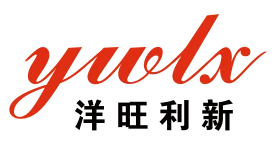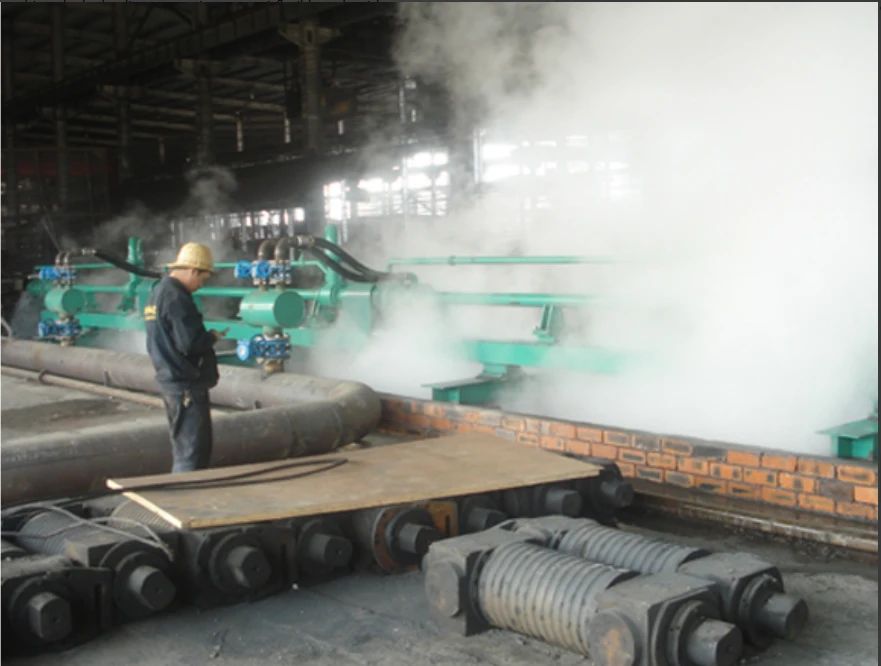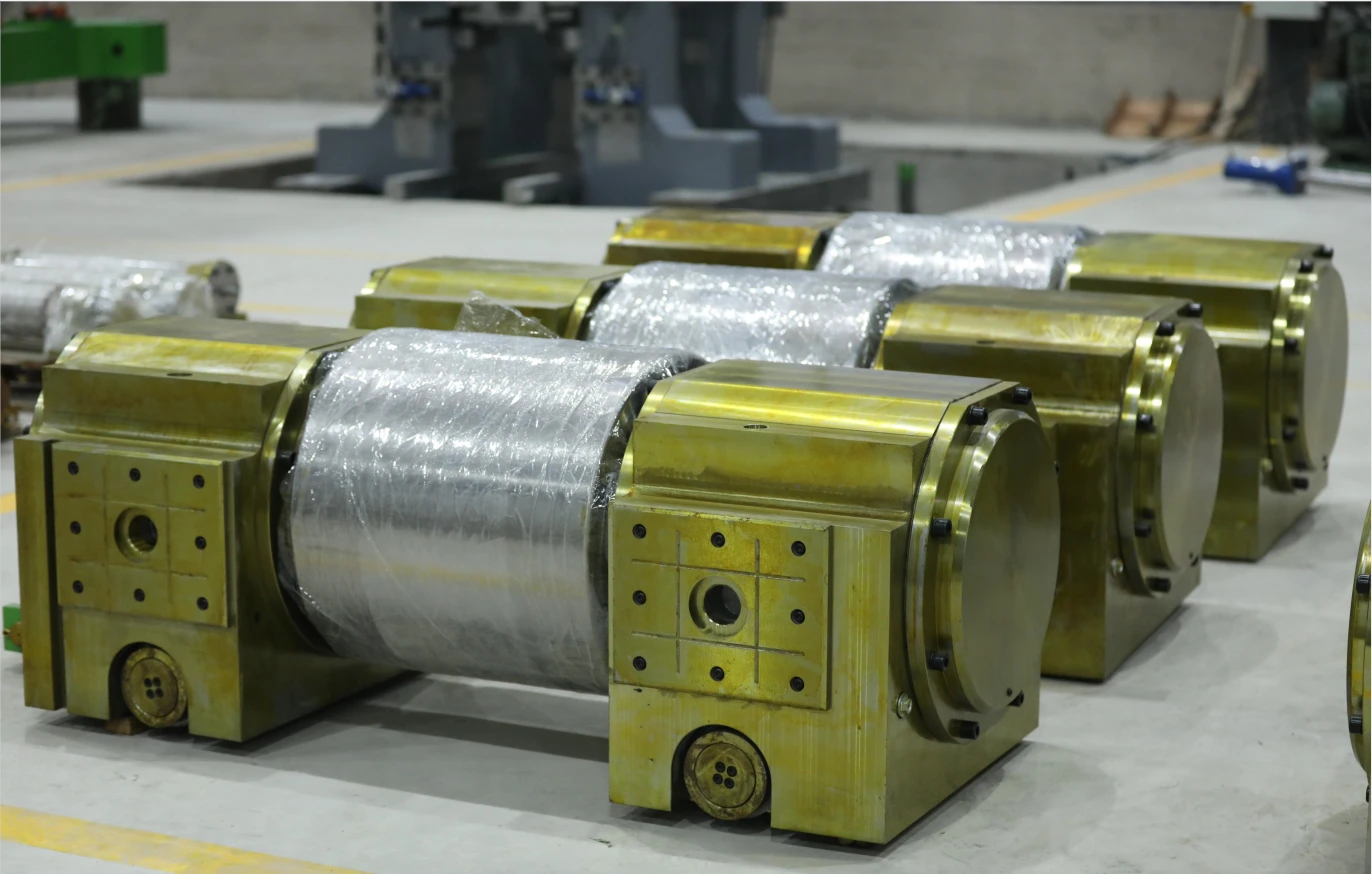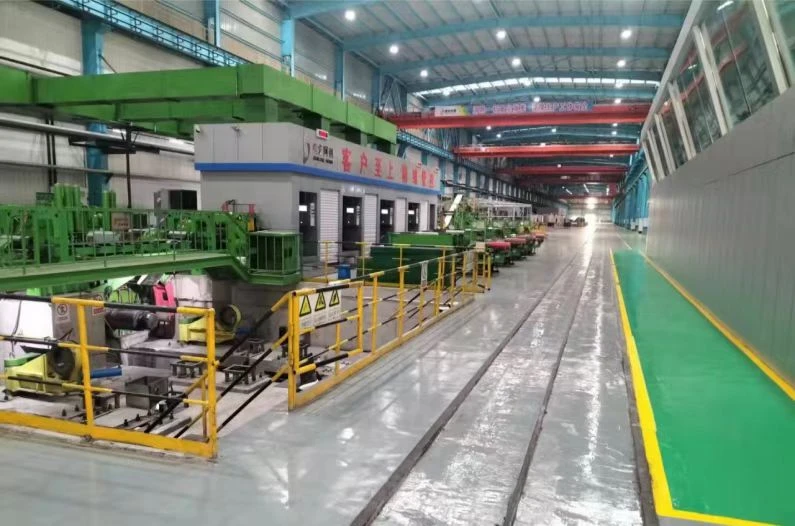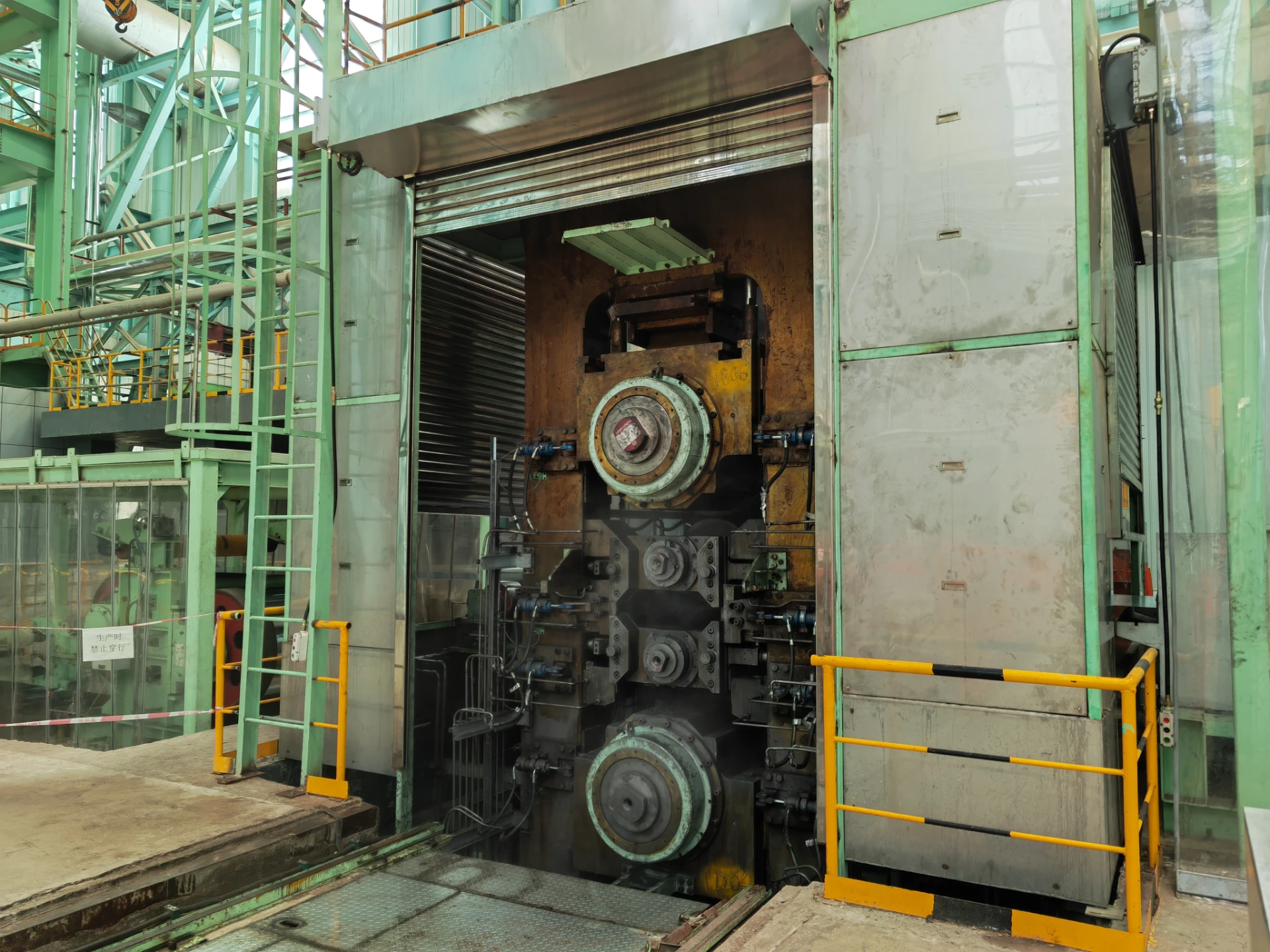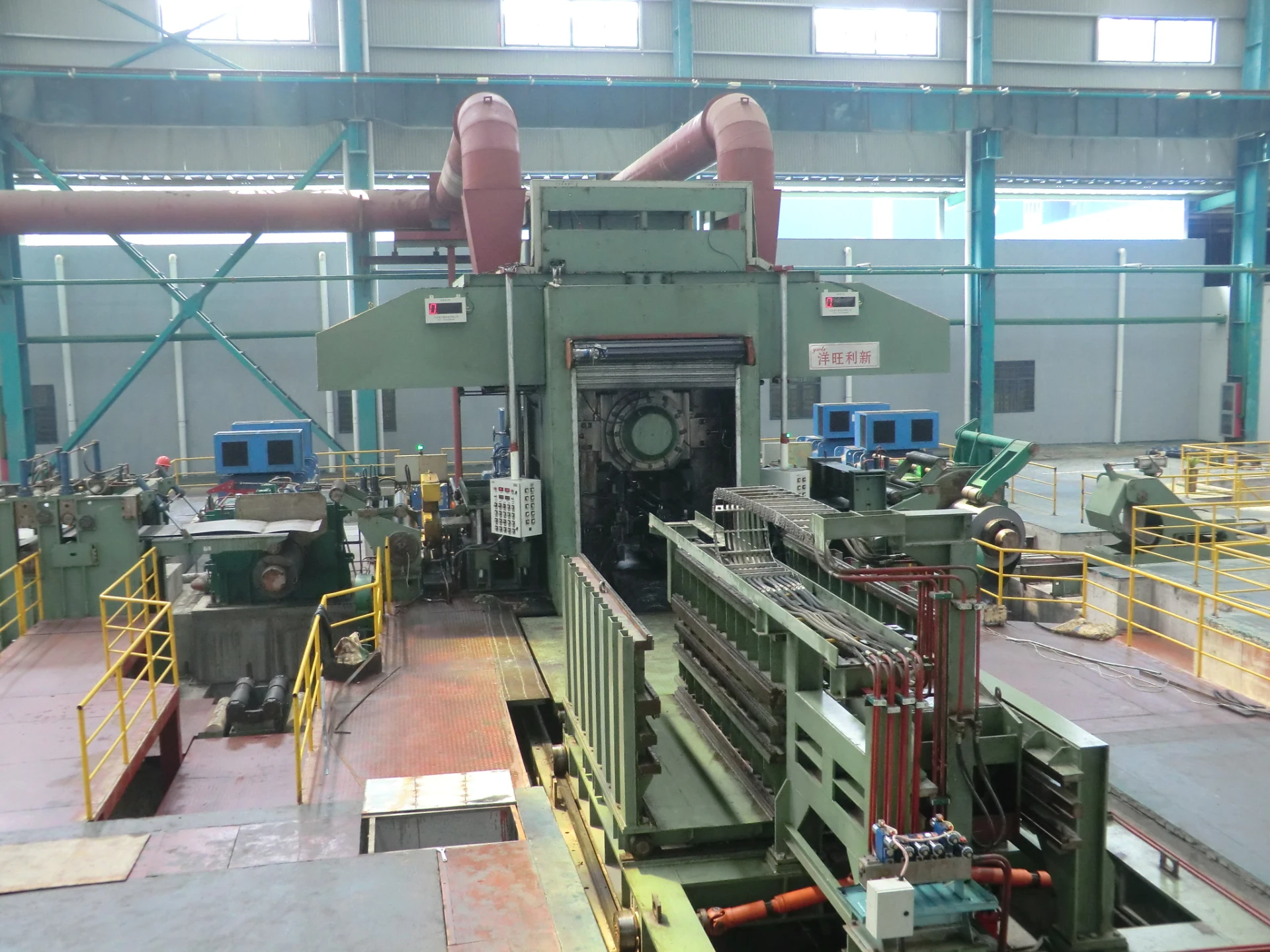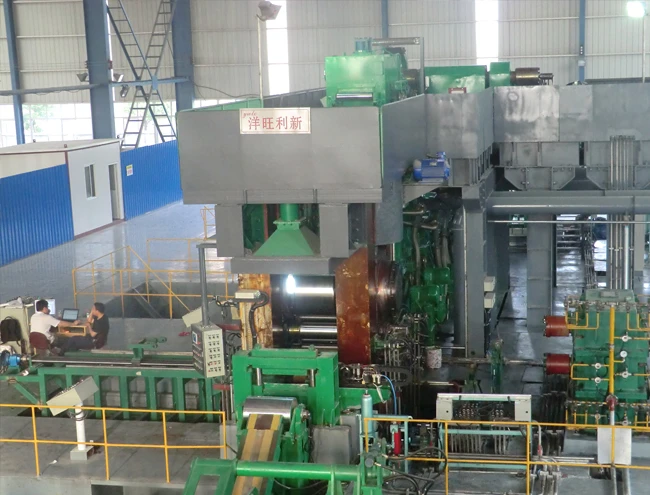
Equipment Composition and Key Component Functions of a Reversible Cold Rolling Mill
A reversing cold rolling mill is a critical piece of equipment in metal processing, particularly for producing high-precision thin strips of steel, aluminum, and other non-ferrous metals. Unlike tandem mills, which process metal in a continuous forward motion, a reversible cold rolling mill allows the metal strip to pass back and forth between work rolls multiple times, ensuring precise thickness reduction and superior surface finish.
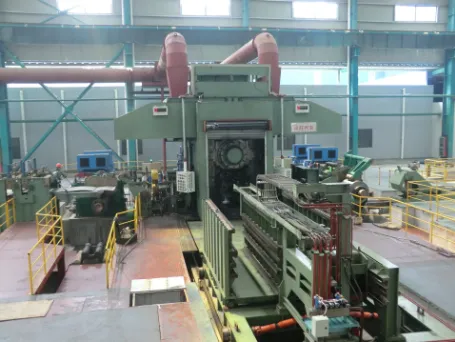
These mills are widely used in industries requiring tight tolerances, such as automotive, aerospace, and electronics manufacturing. The cold reversing mill design offers flexibility in processing various materials and thicknesses, making it indispensable for high-quality strip production.
Main Components of a Reversible Cold Rolling Mill
The efficiency and performance of a reversing rolling mill depend on its key components, each playing a vital role in the rolling process. Below is an in-depth look at the primary elements and their functions.
1. Work Rolls and Backup Rolls
The heart of any reversing cold mill is its roll system, consisting of work rolls and backup rolls. The work rolls are in direct contact with the metal strip, applying compressive force to reduce thickness. Due to high pressure, these rolls are typically made from high-grade alloy steel or tungsten carbide for durability.
Backup rolls support the work rolls, preventing deflection under heavy loads. Their larger diameter ensures stability, maintaining uniform pressure distribution across the strip width. In a reversible cold rolling mill, both sets of rolls must withstand bidirectional stress as the strip passes forward and backward during processing.
2. Mill Stand and Housing
The mill stand provides structural integrity to the entire reversing rolling mill. It houses the rolls, bearings, and hydraulic systems while absorbing rolling forces. The housing is constructed from high-strength steel to resist deformation under extreme pressure.
Precision alignment is crucial in a cold reversing mill to prevent strip misalignment, edge cracks, or gauge variations. Modern mills incorporate automated hydraulic screw-down systems to adjust roll gaps dynamically, ensuring consistent strip thickness.
3. Uncoiler and Recoiler Systems
Since a reversing cold rolling mill processes the strip in multiple passes, it requires efficient uncoiling and recoiling mechanisms. The uncoiler feeds the metal strip into the mill, while the recoiler winds it after each rolling pass.
These systems include tension control devices to maintain uniform strip tension, preventing wrinkles or breaks. In advanced reversing cold mills, servo-driven mandrels and automatic edge guiding systems ensure smooth transitions between forward and reverse rolling directions.
4. Hydraulic and Pneumatic Systems
Hydraulic systems in a reversible cold rolling mill are responsible for roll positioning, bending, and balancing. Hydraulic cylinders adjust roll gaps with micron-level precision, while roll bending systems compensate for deflection, ensuring uniform strip thickness.
Pneumatic systems assist in roll changing operations and strip threading. Quick roll change mechanisms minimize downtime, enhancing productivity in reversing rolling mills.
5. Cooling and Lubrication Systems
Cold rolling generates significant heat due to metal deformation. A reversing cold mill employs emulsion-based cooling systems to dissipate heat and lubricate the strip-roll interface. Proper lubrication reduces friction, extending roll life and improving surface finish.
Advanced filtration systems remove metal particles and contaminants from the coolant, maintaining optimal rolling conditions. In high-speed cold reversing mills, temperature control is critical to prevent thermal expansion of rolls, which could affect dimensional accuracy.
6. Automation and Control Systems
Modern reversible cold rolling mills rely on sophisticated automation for precision control. Programmable Logic Controllers (PLCs) and Human-Machine Interfaces (HMIs) regulate rolling speed, tension, and thickness in real time.
Sensors monitor strip thickness, flatness, and surface defects, allowing instant adjustments. In a reversing rolling mill, automation ensures seamless transitions between forward and reverse passes while maintaining consistent product quality.
Advantages of a Reversible Cold Rolling Mill
Compared to continuous tandem mills, a reversing cold mill offers several benefits:
Flexibility: Capable of processing various materials and thicknesses without requiring multiple mill setups.
Precision: Allows incremental thickness reduction with tight tolerances, ideal for high-end applications.
Cost-Effectiveness: Lower initial investment compared to tandem mills, suitable for small to medium-scale production.
Future Trends in Reversing Cold Rolling Technology
As industries demand higher precision and efficiency, reversible cold rolling mills are evolving with innovations such as:
AI-based process optimization: Machine learning algorithms predict roll wear and optimize rolling parameters.
Enhanced material handling: Automated coil transport and threading reduce manual intervention.
Energy-efficient designs: Regenerative braking systems recover energy during deceleration.
The reversing cold rolling mill remains a cornerstone of precision metal processing, offering unmatched flexibility and control. Its key components—work rolls, mill stands, coiling systems, and automation—work in unison to produce high-quality strips with exacting tolerances.
As technology advances, reversible cold rolling mills will continue to integrate smarter controls and sustainable practices, reinforcing their role in modern manufacturing. Whether for automotive steel or aerospace-grade aluminum, the cold reversing mill is an indispensable tool for achieving superior metal strip quality.
-
YWLX’s 1450mm Six-Hi Reversing Mill Goes Live in BangladeshNewsNov.24,2025
-
Adjusting Roll Gap in 6Hi Reversing Cold Rolling Mill for Thin StripNewsNov.13,2025
-
Quality Control Standards for Automatic Gauge Control in Strip RollingNewsNov.13,2025
-
Effect of Skin Pass Rolling on Metal DuctilityNewsNov.13,2025
-
Key Components of a Modern TempermillNewsNov.13,2025
-
Common Wear Patterns of Work Roll in Tandem Cold Mill OperationsNewsNov.13,2025
-
Revolutionary Skin Pass Rolling Technology for Enhanced Steel QualityNewsNov.04,2025


